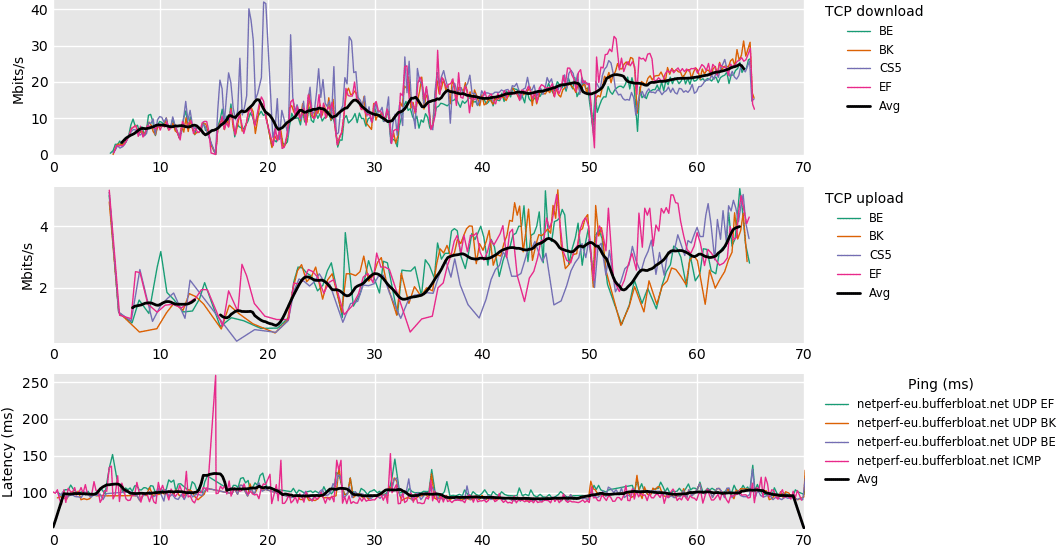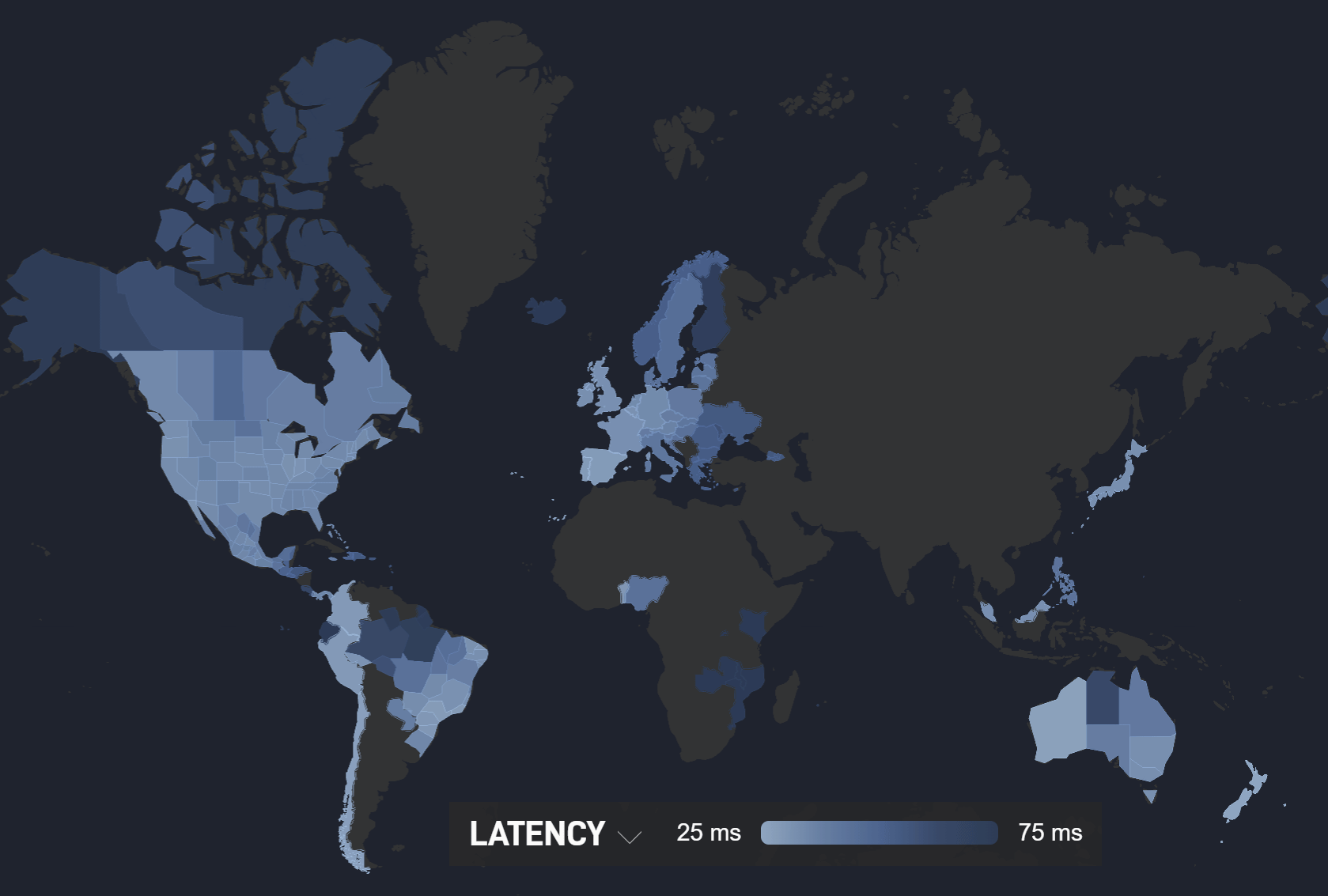

|
||
|
||
In his January 12 SpaceX update, Elon Musk said the biggest goal for Starlink from a technical standpoint is to get the mean latency below 20 ms. He expanded by saying that given the speed of light, 8 ms is the absolute minimum latency for a satellite at 550 km. He believes they can optimize terrestrial and inter-satellite links, and minimize queueing delays and dropped packets, to recude the the rest of the time to below 10 ms. He predicted that eventually, “Starlink will be more responsive than ground Intenet in most cases.”
A month later, we saw early results of the latency-reduction effort. On February 12, Oleg Kutkov tested Starlink’s Rev 3 and Rev 4 terminals and, as shown below, he found no latency inflation as background upload and download speeds increased simultaneously when using the Rev 3 terminal. He compared the Rev 3 and 4 terminals and found that Rev 4 upload and download speeds were about 50% faster than Rev3. Average ping times were somewhat improved for Rev 4 (88 vs. 93 ms), but jitter was significantly lower (9.2 vs. 111.9 ms). You should also check out Dave Taht’s take on Oleg’s results. He concedes that Starlink has improved dramatically and outlines steps they could take to reduce latency further.

Last week, SpaceX released news of progress toward the 20 ms latency goal. They have worked to reduce latency throughout the Starlink system. Since the beginning of the year, they have deployed and tested 193 different satellite software builds, 75 gateway software builds, 222 Starlink software builds, and 57 WiFi software builds.
For a month preceding March 7, SpaceX collected data every 15 seconds from millions of Starlink routers. In analyzing the data, they defined worst-case latency as the point at which 99% of times are shorter and peak hours as 6-9 PM local time.
In the United States, they found that median latency was reduced by more than 30%, from 48.5ms to 33ms during peak usage hours, and worst-case peak hour latency had dropped by over 60%, from over 150ms to less than 65ms. Outside the United States, median latency was reduced by up to 25% and worst-case latencies by up to 35%. The map shown here is interactive and shows availability and upload and download speeds in addition to latency.

SpaceX says it has “tuned our algorithms to prefer paths with lower latency, no matter how small the difference, and to remove any and all sources of unnecessary and non-physical latency.” Dave Taht and his colleagues at LibreQoS might disagree, but latency will improve over time regardless.
Latency will improve as SpaceX launches more satellites with more capacity and inter-satellite laser links, and the launch rate will increase when Starship becomes available. Adding ground stations will also improve latency. (Note that the only African light-colored areas in the above latency map are within reach of the only ground stations on the continent).
I hope Musk achieves the 20 ms goal for Starlink. Doing so would not only benefit Starlink customers, it would call the attention of the FCC and terrestrial Internet service providers to the importance of latency as a performance and marketing metric.
Sponsored byRadix

Sponsored byCSC

Sponsored byDNIB.com

Sponsored byIPv4.Global

Sponsored byVerisign

Sponsored byWhoisXML API

Sponsored byVerisign

Dear Larry,
Please see:
https://http-quss.com/Downloads/rd_results/HTTP-QuSS_TCP_Bandwidth_Utilization_6.png
Benchmarks can be downloaded her:
https://http-quss.com/HTTP-QuSS_Designed_for_AI_Processing_Power_and_Network_Speed.html
Kind Regards
Klaus